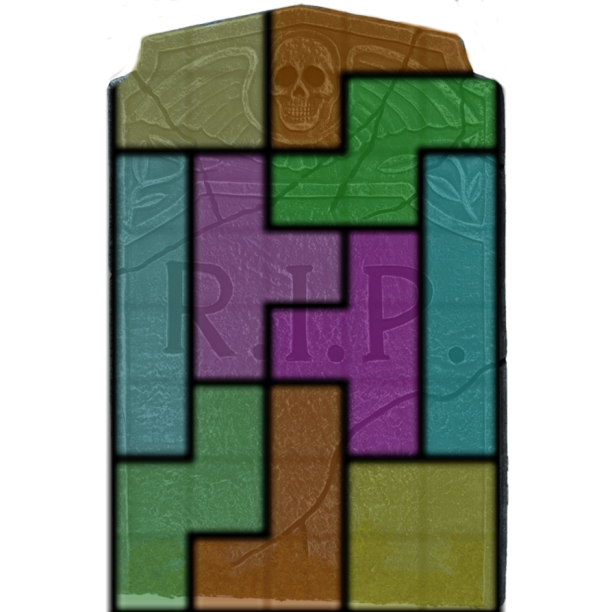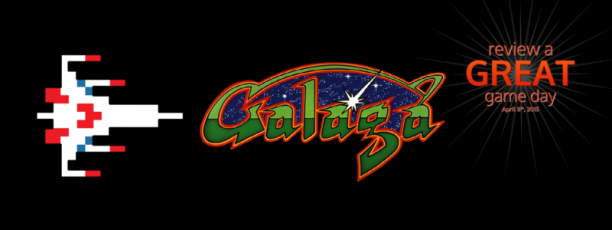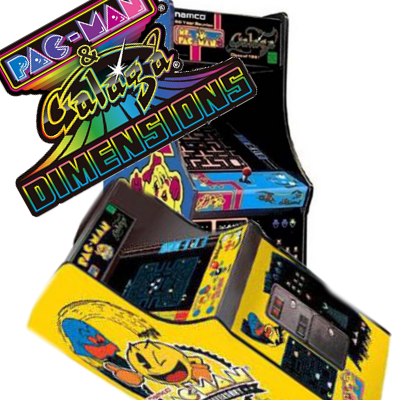
GMZ
GMZ – Review a Great Game Day Edition
The Art of Gaming with Theodore Ipecac Effete III – Tetris
By Theodore Ipecac Effete III
The Odyssey, Icelandic sagas, the Epic of Gilgamesh, Beowulf, and Tetris. The Faerie Queene, Animal Farm, Gulliver’s Travels, and Tetris. No, this isn’t a Sesame Street’s “one of these things is not like the other.” I shall describe to you how Tetris, especially for the NES, is the contemporary world’s greatest epic and allegory, a multilayered work of art with more meaning packed into it than anything that has come before it or after.
Tetris is about the human condition, how we kill each other to the hopes of finding meaning in a meaningless existence, about humanity’s struggle to bend the world to its will, our never-ending and foolish quest to force order into a world of chaos. You start with the pieces, the tetriminos: the I, the T, the O, the L, the J, the S, and the Z. Each represents one of the 7 races, and before you say all the Ts look the same, just stop. That’s exactly the kind of racist rhetoric the world has come to expect from the Is. Each type of “piece” is just looking for a place to belong, a place to fit in. Often, the various pieces coexist fairly well, that is, until an I comes along and wipes them all out. What’s worse, the Tetris world seems to have more of every other type of piece, but somehow the Is always show up and ruin everything. Think about this the next time you go for a Tetris. Ask yourself why you get so excited for genocide. Write a poem exploring your feelings on the issue.
The pieces and the goal of the game, to place them in such a way as to make lines disappear, is also a reflection of how we strive to put order into our world. Having everything neatly fit together is some bizarre obsession humans seem to have been cursed with. This is a likely as a result of all the chaos we see around us. Earthquakes, tornados, volcanoes, landslides, avalanches, hurricanes, typhoons, tsunamis, plastic bags floating in the wind: all of this serves as a reminder that the world doesn’t care about what we want and will usually just ruin everything for us, sometimes by giving us 7 S pieces in a row, followed by an O.
This is also a reminder that our existence itself, along with our wants, desires, goals, it is all contingent on nothing more than luck. Whether we die getting hit by a bus or die peacefully in our old age, become a doctor or give blood for drug money, get that big promotion or get downsized, all of it is a crap shoot, because just like we can’t see further than the next piece, we also can’t predict the future in our own lives. As a result, much of our lives and how well or poorly they turn out has more to do with luck than good planning. You can’t prepare for the eventuality of getting, at any point in time, 11 consecutive pieces of the same shape, just like you can’t prepare for the eventuality of your boss sleeping with your partner, your partner leaving you, and you getting fired. So, good luck.
Many people who play Tetris play it competitively, whether at official competitions, or simply by competing with a subling or friend. This is another truth that Tetris exposes to the player. In Tetris, as in life, there are no real winners or losers, there are only people who do better than you people who do worse than you. No matter how good you are at your job, there is always someone better than you, either right now, in the past, or in the future. And worse yet, not matter how good you are, with so much hinging on getting the right piece at the right time, your skills matter little. Some incompetent loser can marry your boss’s cousin while you accidentally dent their car when you open your car door tomorrow morning. In the end, we are all obsessively competing against each other, hoping, wishing, praying for us to get the right piece at the right time and for our enemies, which is every single other person in the world, to get the wrong piece. It’s a dog eat dog world, and we’re all looking out for number 1.
If you’re starting to think “Damn, Tetris is some depressing shit!,” you’re on the right track. If you look at Tetris as you play it, you might not notice something staring you right in the face. As you pile up the pieces and make lines disappear, it can be easy to miss, but try to imagine all the pieces, including the ones you’ve erased thanks to lines. Imagine them all there, standing tall with many complete sections, but ultimately, especially near the top and on the sides, full of holes and missing pieces. Tetris’ final message to the game is this: you will spend all your time putting together your very own tombstone, which, as you can see, is already falling apart and will eventually completely fall apart, leaving nothing behind to remind future generations of your existence. You will die and be completely forgotten.
Game over.
Not-So-Guest Guest Review with Daniel Lamplugh – Galaga
By Daniel Lamplugh
Okay, so, I figured that, for as much shit as we’ve been giving Pac-Man these last few weeks, I’d acknowledge his talent at least a little on this year’s Review a Great Game Day. So, I figured I’d discuss the arcade game that I play most in the 1MoreCastle break room: Galaga.
Now, I know what you’re all saying: “Daniel! Pac-Man doesn’t have anything to do with Galaga!” Really? Try telling Namco and Midway that!
So, what the fuck is Galaga? Basically, it’s the thing that has been keeping Pac-Man alive all these years. Pac-Man has the star power, no doubt, because unfortunately, “Weird looking space ship thing” wasn’t exactly a solid mascot idea, but as far as game design, Galaga whoops Pac-Man’s ass hands down. Seriously, think about it: how often do you go up to a Pac-Man/Galaga combo cabinet and actually see someone choosing Pac-Man over Galaga? I actually picked Pac-Man on one of those cabinets on Monday, the first time in several years I’ve done so, and that was on accident.
So, on the first, gameplay. The actual mechanics of Galaga are fairly simple. Move left and right, shoot, and avoid stuff. Galaga partially co-opted the mechanics of Space Invaders (which, everyone did back in those days). A sequel to 1979’s Galaxian, Galaga’s improvements are tenfold. Firstly, the enemies are unique and function in different ways. The Bee-shaped enemies move at a different rate than the butterfly shaped enemies. Enemies, in later levels, will split into multiples if not destroyed fast enough. The things that look like Y-Wings take two hits to kill, and also capture your ships with a several space wise tractor-beam, meaning it effectively halves your dodging space. That alone creates a new level of depth which means you have to micromanage enemy fire, enemy movement, and actual moveable space available. All of this is created with only two controls: a joystick, and a button. On Extra Credits, they talk about having the maximum amount of depth in the minimal amount of complexity, and I think that is visible in Galaga to an amazing degree. The gameplay is engrossing, and simple. It creates frantic tension equal to the action of a Die Hard movie. More so, after all these years, I’ve never tired of it. In any arcade, it’s the game I run to.
Now, visually, Galaga is a pretty game, especially compared to the laziness that is Pac-Man. Let’s compare: Galaga has 3 different basic enemy types, that can morph into different enemy sub types. Overall, there are 9 different enemy sprites in Galaga. In Pac-Man, there is one sprite, that is colored differently. The protagonist ship in Galaga is impressively detailed for the era, and is still a decent looking sprite by today’s standards. Pac-Man is literally just an unfinished yellow circle. While Galaga went for the best visuals possible, Pac-Man went for the laziest approach a game could possibly take.
Now, Galaga isn’t the perfect game. Yes, it’s a bit frustrating at times, and it does have the weird case of having it’s mechanics being changed slightly by cabinet (like how many times you can fire at once), but those are negligible compared to the greatness the game achieves. I mean, just think of how many great “wow” moments the game has given you? Like the first time you made it to a “Challenge Stage”, and were ready to dodge and weave from bullets, and then realized that the enemies weren’t even attacking. or the first time you saw an enemy split into three separate scorpion ships? Or the first time you shot down an enemy holding a captured ship, and found out you could connect them to have double fire-power?
Galaga is a game that doesn’t get nearly as much love as it deserves from the people created it. It really is treated as the bastard stepchild, constantly being forced to share a cabinet with the tumor that is Pac-Man. Some might say that I champion the underdog too much, but in my view, Galaga is frankly the better game. Easily one of the most iconic of the arcade era, and one of the few to survive popularly in its original form. It’s graced every arcade, pizza parlor, bar, and apparently, every website break room (as far as I can tell). Galaga’s effect on games is immeasurable, with top down shooters having become a vast genre, each game containing a touch of Galaga somewhere, and the forefather itself still holds up strongly.


